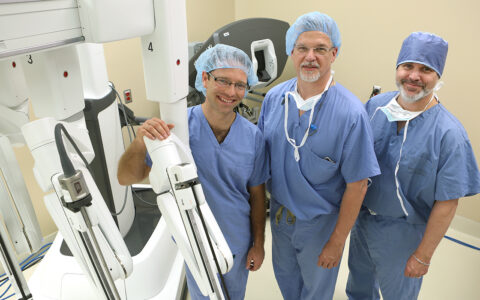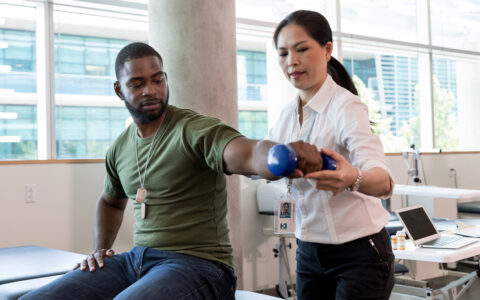Bringing innovations from bench to market may seem daunting for a researcher. However, resources for technology transfer are available at Vanderbilt University Medical Center (VUMC) to help innovators leverage their ideas for the public good.
Kenneth Holroyd, M.D., M.B.A., Medical Director for the Center for Technology Transfer and Commercialization (CTTC) at Vanderbilt, recently outlined three recent successes for VUMC researchers who brought their innovations to the marketplace to address unmet needs.
COVID-19 Antibody Therapy
One of these innovations was an antibody-based therapy for prevention of COVID-19 that was discovered by Vanderbilt Vaccine Center Director James E. Crowe, Jr., M.D., and colleagues.
Through assistance with Vanderbilt’s Center for Technology Transfer and Commercialization (CTTC), Crowe was able to work with AstraZeneca to commercialize an antibody therapy, Evusheld, based on antibodies patients developed naturally in response to COVID-19.
This collaboration between Crowe’s laboratory and the pharmaceutical company helped enable distribution of this therapy to many countries around the world at a crucial time.
“That was very important for them and for the contribution that VUMC made to the fight against the COVID-19 pandemic,” Holroyd said.
Magnetic, Flexible Endoscope
The development of a novel, magnetic, flexible endoscope arose from a collaboration spanning more than 10 years between gastroenterologist Keith Obstein, M.D., M.P.H., who was the Brock Family Center Innovator of the Year for 2023, and engineer Pietro Valdastri, Ph.D.
The use of this endoscope in visualizing the colon was recently evaluated in a clinical trial in which it was successfully used for colonoscopy in five patients without the addition of sedation. To further the process of commercialization and patents related to the device, the team founded the company Atlas Endoscopy.
The endoscope combines features including magnetic field sensing, robotic control and real-time image processing.
“It is a much smaller, more comfortable colonoscope that revolutionized cancer screening because it does not require sedation and provides, with a smaller scope, a very clear picture for the gastroenterologist looking to see early signs of colon cancer,” Holroyd said.
Robotic Surgical Instrumentation
Another innovation is a robot developed by a Vanderbilt Institute for Surgery and Engineering team, including urologist S. Duke Herrell, M.D., F.A.C.S., and engineer Robert Webster III, Ph.D.
“It revolutionized the way that certain surgical procedures are done,” Holroyd explained.
The surgical aid consists of needle-sized arms delivered through the tip of an endoscope for endoscopic transurethral prostatectomy. The system was developed with the aid of a grant from the U.S. National Institutes of Health and is now being brought to the marketplace through the company Virtuoso Surgical.
“They have been raising investment and demonstrating the utility of the surgical instruments for performing procedures that can’t otherwise be done,” Holroyd said.
He added that work is underway on an application for approval by the U.S. Food and Drug Administration.
Common Threads to These Successes
Each of these successful innovations has already made it to the marketplace or is well on its way. According to Holroyd, the researchers behind these innovations had already developed a relationship with the CTTC that helped propel development of these technologies.
“All met a clinical care need currently unfulfilled or needing substantial improvement.”
“They all involved cutting-edge science or engineering, and they all involved a collaboration of experts with different scientific, clinical and engineering disciplines,” Holroyd said. “They all met a clinical care need currently unfulfilled or needing substantial improvement.”




